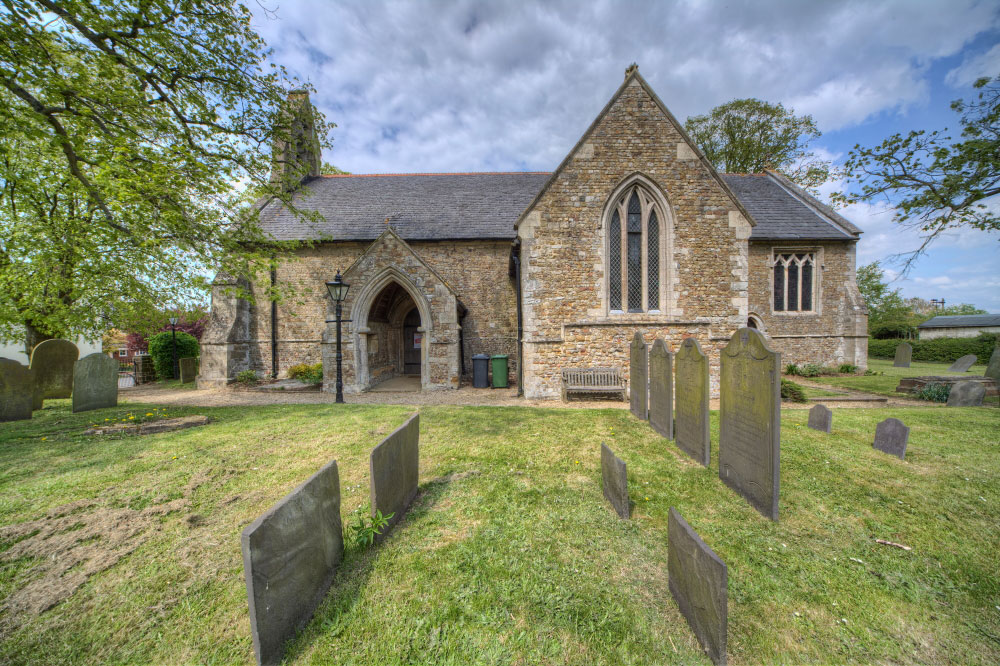
South porch and trancept at the pretty Mowsley church
With a population of over two hundred, Mowsley is a small rural village some eleven miles south of Leicester. The name may derive from ‘Muslai’ meaning ‘mouse infested field’, not a site I would have planned to put a settlement on but in ancient times they did. Mowsley was a chapelry in the ecclesiastical parish of Knaptoft, but this was de-populated by the 16th century and Mowsley became its own parish. Like Laughton its neighbour, the village is sited on high ground (highest point 550ft) whilst falling away to the south.
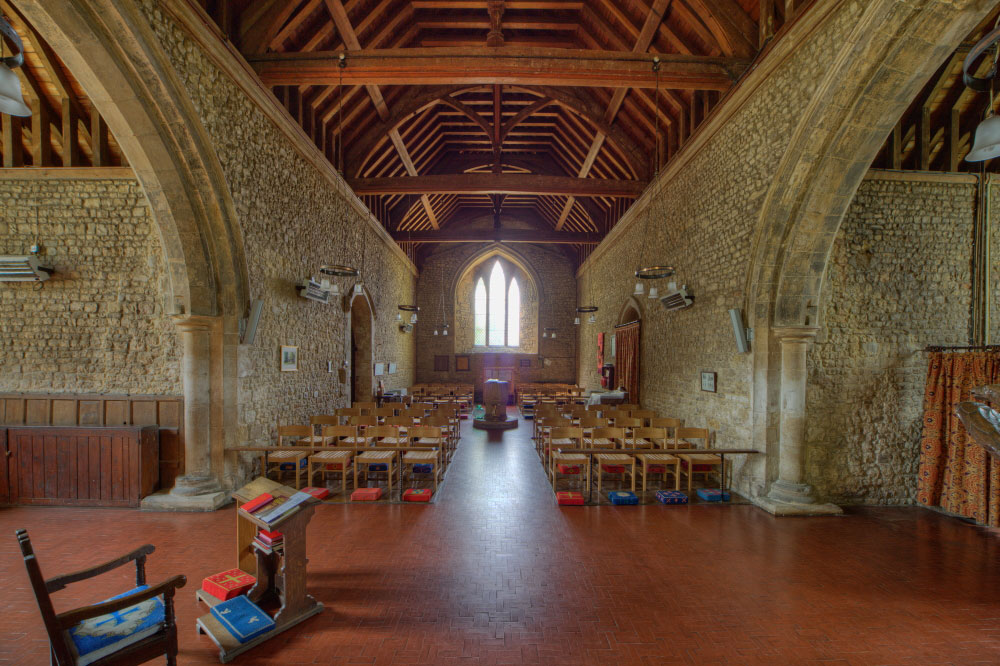
View of west window and nave. The roof dates from the Victorian restoration
Mowsley was a small village in 1086 when the population was recorded as eight. The population rose to a maximum of nearly three hundred during the 1830’s before falling back due to de-population of the rural villages during the industrial revolution. However in 1931 the population was recorded as 243 due to the presence of the County Isolation Hospital – if anyone has any information on this place I would be most interested to know more.
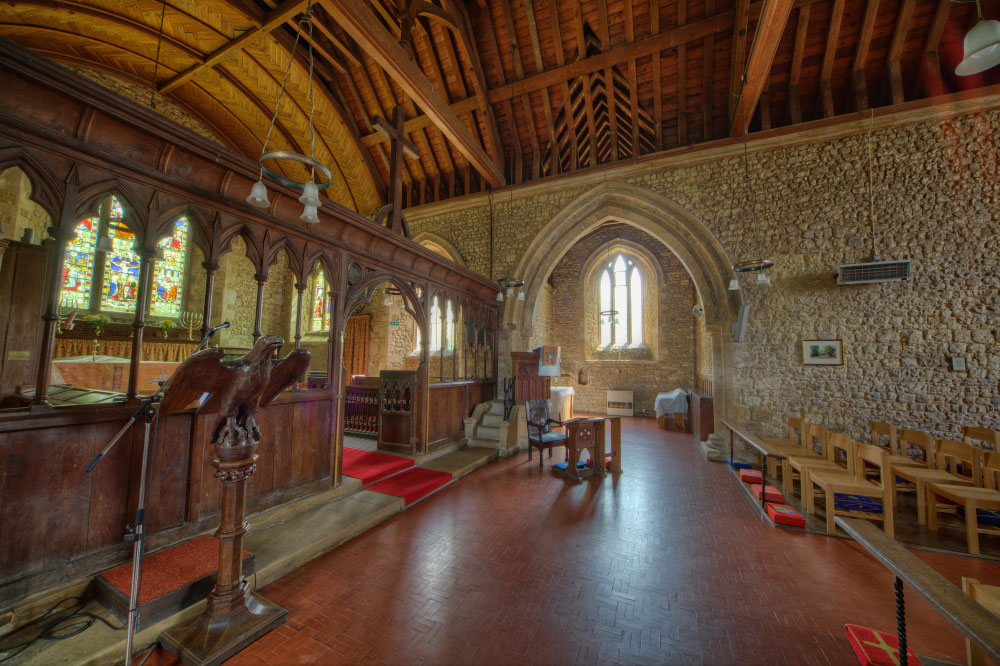
Rood screen to left and archway to south trancept
The Horton family had settled in Mowsley by 1345 and they were still evident in the village in 1909. A Joseph Horton between 1761 & 1768 cut his sons out of their future estate with a shilling each and left all his money to a nephew who then squandered it. The last of the Hortons left Mowsley in the 1980s.
The church at Mowsley dates to the 13th century and unusually nearly all of the main fabric dates from this period. St Nicholas consists of a bell-cote, nave, north & south trancepts, chancel and south porch. This church is in a cruciform plan and the walling is of coursed rubble and limestone dressings.
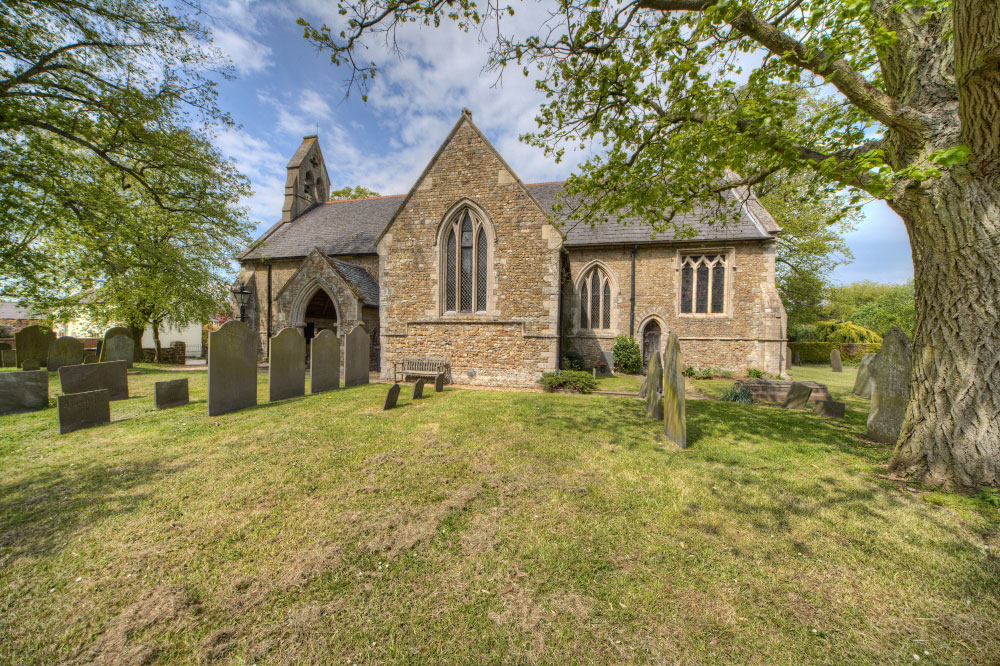
Mowsley is a pretty little church and the cruciform layout is unusual for a church this size
There is a large piscina in the chancel and two smaller ones in the north and south trancepts where chapels would have been sited. The font is octagonal with simple decorated panels, each containing a trefoiled arch in low relief and dates from the 14th century, it sits on a later plinth. The Revd P. Wilson repaired the entrance arch of the south porch in 1854 and he erected a new bell-cote in 1859. From 1882-83 the architect J. L. Pearson completed a restoration at the church. The walls were stripped of plaster, the roof was replaced and external walling repaired. The flooring was gradually re-laid in three stages, from 1893.
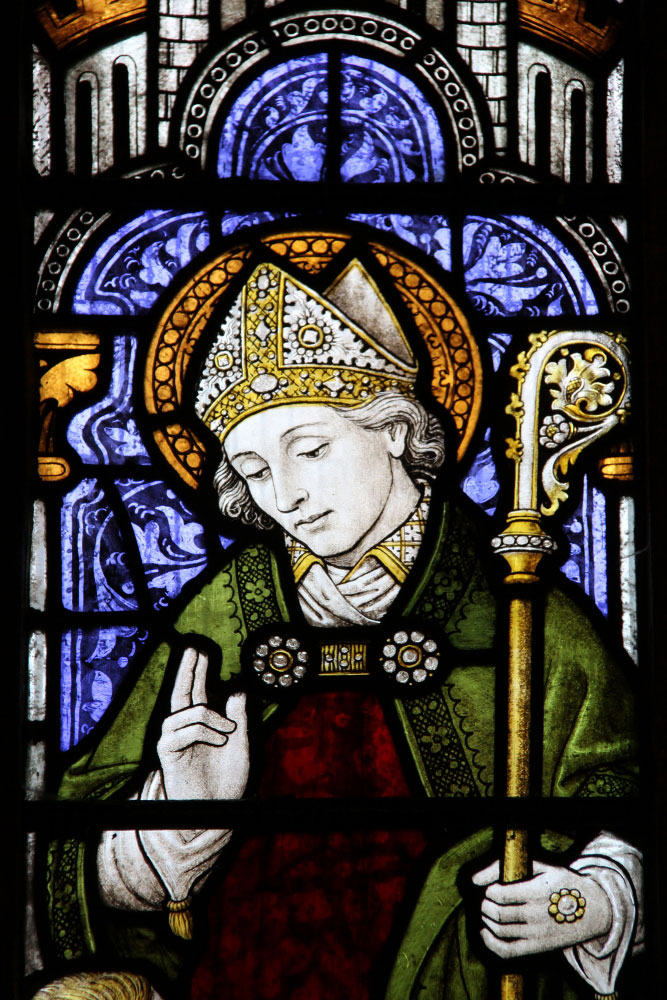
The church interior is rather plain with no memorials as such but with its cruciform shape it is unusual for Leicestershire and is well worth a visit. The village is pretty and there are good walks and other open churches nearby. The church is however locked outside of normal services but there is key-holder information in the porch. There is also a pub in the village for refreshments.
I have had this update from John Lacey Chairman of Mowsley Heritage Society;
Re the manor(s) – Mowsley at Domesday had two manors and part of the parish appears to have come under Knaptoft manor. The two Mowsley manors subsequently became one with the Brabazon family at one time being lords (from who are descended the Earls of Meath). I would be very interested to know more about the links with the Earls of Warwick and the collegiate church of St. Mary’s in Warwick – I suspect these are linked with Knaptoft not Mowsley. Also the Manners family (Dukes of Rutland) were lords of K not M.
The ancient ecclesiastical parish of Knaptoft is believed by me to have been based upon a Saxon estate (several tentative clues exist) and included Mowsley, Shearsby and Walton in Knaptoft (as it used to be called). All of these settlements including Knaptoft itself had their own manor(s), the lords and overlords of which were independant of the ecclesiastical parish. To confuse the issue Hugh Gobion who was lord of Knaptoft manor, at the behest of his brother Anselm who was Rector of the ecclesiastical parish, built Knaptoft church together with Mowsley and Shearsby chapels (Walton was a hamlet) – but otherwise Knaptoft had no manorial control over the other parishes.



February 11, 2018
Dear Mr. Jones,
I enjoyed reading your website, which I came across while trying to determine why the famous hymn composer, Cyril Vincent Taylor (1907-1991), had used the name “Mowsley” for his hymn tune of that name, to which we sing the hymn “Jesus, on the mountain peak” on Transfiguration Sunday (which is today).
According to Market Harborough and the Local Villages by Trevor Hickman, Amberley Publishing, 2009, 2013: Stroud, Taylor’s father, The Rev. Decimus Albert Gay Taylor, was rector of St. Nicholas Church, Mowsley, in 1922.
The church that you have so beautifully memorialized on https://www.leicestershirechurches.co.uk has been similarly memorialized by this magnificent hymn tune. One can see from your extraordinary photography why this little church would have made such an impression on the great composer.
Baptism: 9 Feb 1908 St George, Wigan, Lancs.
Cyril Vincent Taylor – [Child] of Decimus Albert Gay Taylor & Margaret Jessie
Abode: 7 Park View
Occupation: Clerk in Holy Orders
Baptised by: A G Taylor Vicar
Register: Baptisms 1893 – 1911, Page 73, Entry 577
Source: Original register at Wigan Archives
Jonathan Marler, Oakville, Ontario
September 18, 2019
I have been researching Richard Blackwyn who is shown as rector of Shesrsby church in 1565. We believe he was rector of Knaptoft and Mowesly. Could you throw any light on this. I am a retired Baptist minister in NEVictoria Australia
May 23, 2020
Hello Mark,
I have just discovered your query re Richard Blackwyn. He was rector of Knaptoft parish which included Shearsby and Mowsley. He is first recorded in 1565, his believed successor is first recorded in 1586. Until comparatively recent times the rectors were all absentees i.e. they resided elsewhere and employed chaplains to perform the religious duties in the parish. Unfortunately I have no information about his domicile or his patron.
July 27, 2021
I believe Richard Blackwyn was a Dominican monk who declared allegiance to the king and was given the three churches. He may have resided in Leicester
April 8, 2024
There’s a bit about the isolation hospital here. http://liberalengland.blogspot.com/2012/05/explaining-mowsley-village-hall.html
April 8, 2024
Brilliant. Very interesting . Well found. Thanks.